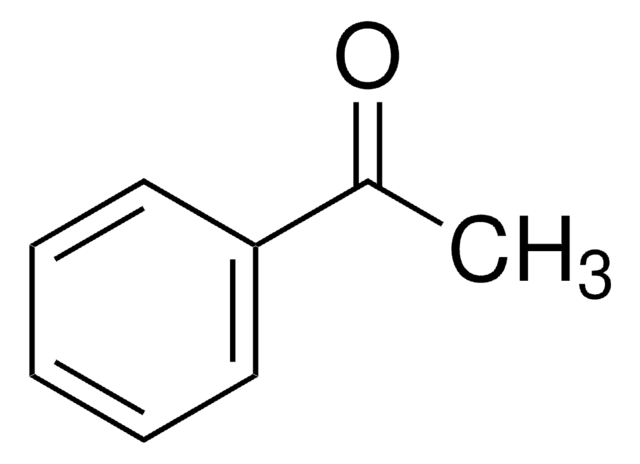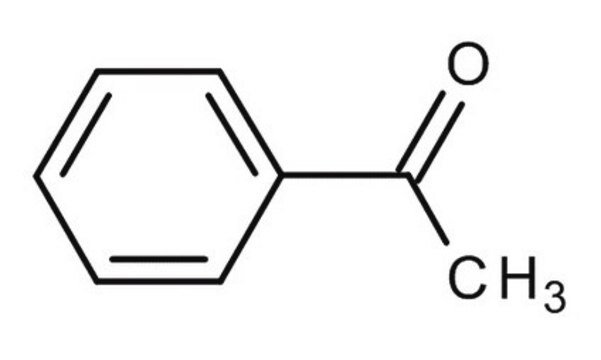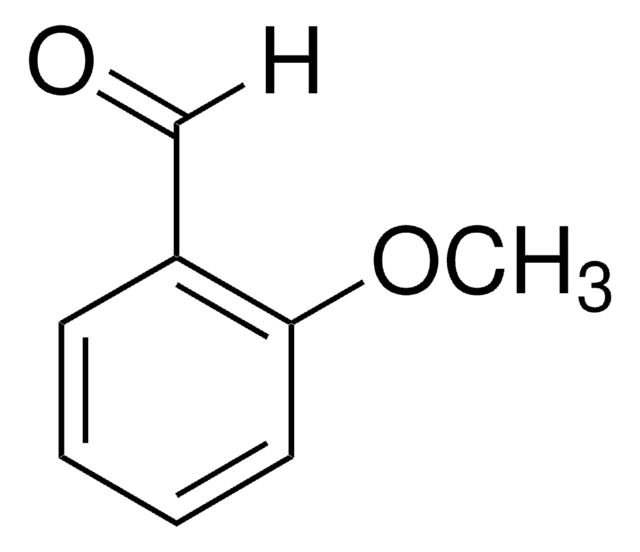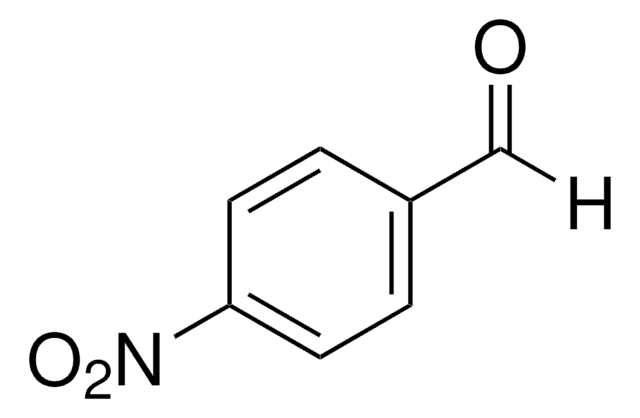A88107
p-Anisaldéhyde
98%
Synonyme(s) :
4-méthoxybenzaldéhyde
About This Item
Produits recommandés
Densité de vapeur
4.7 (vs air)
Niveau de qualité
Essai
98%
Forme
liquid
Indice de réfraction
n20/D 1.573 (lit.)
pb
248 °C (lit.)
Pf
−1 °C (lit.)
Densité
1.119 g/mL at 25 °C (lit.)
Chaîne SMILES
[H]C(=O)c1ccc(OC)cc1
InChI
1S/C8H8O2/c1-10-8-4-2-7(6-9)3-5-8/h2-6H,1H3
Clé InChI
ZRSNZINYAWTAHE-UHFFFAOYSA-N
Informations sur le gène
human ... CYP1A2(1544)
Catégories apparentées
Application
Mention d'avertissement
Warning
Mentions de danger
Conseils de prudence
Classification des risques
Aquatic Chronic 3 - Repr. 2
Code de la classe de stockage
10 - Combustible liquids
Classe de danger pour l'eau (WGK)
WGK 1
Point d'éclair (°F)
240.8 °F - closed cup
Point d'éclair (°C)
116 °C - closed cup
Équipement de protection individuelle
Eyeshields, Faceshields, Gloves, type ABEK (EN14387) respirator filter
Faites votre choix parmi les versions les plus récentes :
Certificats d'analyse (COA)
Vous ne trouvez pas la bonne version ?
Si vous avez besoin d'une version particulière, vous pouvez rechercher un certificat spécifique par le numéro de lot.
Déjà en possession de ce produit ?
Retrouvez la documentation relative aux produits que vous avez récemment achetés dans la Bibliothèque de documents.
Les clients ont également consulté
Articles
A new HPTLC method to detect adulteration of essential oils is presented along with a range of newly added essential oil reference materials for authenticity analysis.
Knoevenagel Condensation is an organic reaction named after Emil Knoevenagel. It is a classic C-C bond formation reaction and a modification of the Aldol Condensation.
Global Trade Item Number
| Référence | GTIN |
|---|---|
| A88107-5G | 4061837370991 |
| A88107-100G | 4061837370960 |
| A88107-100ML | |
| A88107-1KG | 4061837370977 |
| A88107-1L | |
| A88107-500G | 4061837370984 |
| A88107-500ML | |
| A88107-5ML |
Notre équipe de scientifiques dispose d'une expérience dans tous les secteurs de la recherche, notamment en sciences de la vie, science des matériaux, synthèse chimique, chromatographie, analyse et dans de nombreux autres domaines..
Contacter notre Service technique












